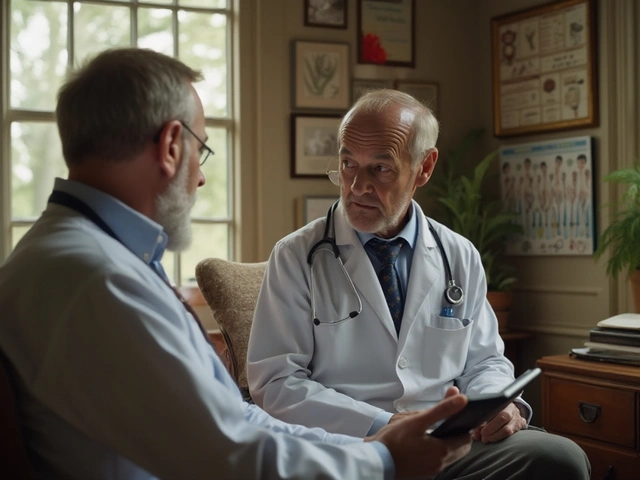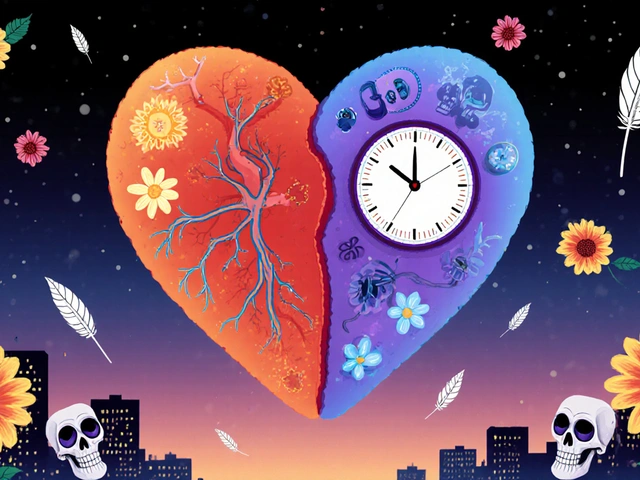The FDA doesn’t guess when a foodborne illness outbreak hits. It doesn’t wait weeks to track down where contaminated spinach or peanut butter came from. Instead, it uses a single, critical piece of data: the lot number. But this isn’t just any lot number. It’s part of a new, legally required system called the Traceability Lot Code (TLC), and it’s changing how food safety works in the U.S.
What the FDA Actually Needs to Find a Problem Batch
Before 2022, tracing a contaminated food product often meant digging through stacks of paper invoices, calling suppliers, and chasing down emails. In a 2019 outbreak linked to romaine lettuce, it took over six weeks to pinpoint the source. That delay meant more people got sick. The FDA needed something faster. The answer was the Food Traceability Rule, finalized on November 15, 2022. It targets the riskiest foods - things like leafy greens, tomatoes, onions, fresh-cut fruits and vegetables, nut butters, cheeses, and certain seafood. These make up about 15% of the U.S. food supply, but they’re responsible for a disproportionate number of illnesses. The rule says: if you handle any of these foods, you must assign a unique Traceability Lot Code (TLC) at three specific points:- When raw agricultural commodities (like lettuce or tomatoes) are first packed at the farm or processing facility
- When seafood is first received on land after being caught
- When food is transformed - like when eggs are turned into liquid egg product, or when tomatoes are made into salsa
The Seven Key Pieces of Data Behind Every Lot Number
A lot number alone isn’t enough. The FDA needs context. That’s why each TLC must be tied to seven Key Data Elements (KDEs):- The TLC itself
- Where it was assigned (the physical location)
- What the product is (e.g., “organic baby spinach”)
- How much of it there is
- The unit of measure (pounds, cases, cartons)
- When the transaction happened
- Who the previous and next handler was
How Companies Create Their Lot Numbers
There’s no single format for a TLC. It can be numbers, letters, or a mix. One company might use “20251120-SPIN-001” - meaning November 20, 2025, spinach, batch 1. Another might use a random code like “X7K9P2M” if they have a system that maps it to their internal records. The only rule: it must be unique within the company’s records and traceable across the supply chain. You can’t just reuse the same code for different batches. The FDA doesn’t care how you generate it - as long as you document your method in a Traceability Plan. That plan must explain how you assign codes, where you store records, and how you handle food that gets transformed. Many companies already had internal lot codes. The FDA’s big win? They said: use those. If your current code meets the requirements, it can double as your TLC. No need to run two separate systems. That saved a lot of companies from costly overhauls.Why This Is a Big Deal - and Why Some People Are Still Worried
This is the most significant change to U.S. food traceability since the Bioterrorism Act of 2002. Before this, traceability was optional. Now, it’s mandatory for high-risk foods. But it’s not perfect. Critics point out that melons, sprouts, and some ready-to-eat foods aren’t on the list - even though they’ve caused outbreaks. The FDA says those are under review. Another issue: data silos. A company might have perfect TLC records, but if their supplier uses a different system that can’t talk to theirs, the data gets stuck. Industry experts warn that without standardized digital formats, the system won’t reach its full potential. The FDA is working on that. Draft standards for electronic data exchange are expected in mid-2024. Until then, companies must keep records in a way that’s sortable and exportable - usually as CSV files.Who Has to Comply - And When
The rule applies to about 15,000 food facilities - farms, processors, packers, warehouses, distributors. But the deadline for compliance has been pushed back. Originally set for January 20, 2026, the FDA proposed extending it to July 20, 2028, citing industry feedback. Small businesses, in particular, said they needed more time to train staff and update software. According to a 2023 survey by the United Fresh Produce Association, 78% of member companies had already started adjusting their systems. The average cost per company was around $42,500. That’s steep for a small farm, but the FDA offers a Traceability Assistance Program to help. Larger companies are ahead of the curve. Walmart has required blockchain-based traceability for leafy greens since 2019. Kroger and other retailers have built their own systems that go beyond the FDA’s minimum.What Happens When a Problem Is Found
Let’s say someone in Ohio gets sick from E. coli linked to packaged salad. The state health department reports it to the CDC, which alerts the FDA. The FDA pulls the case details - what was eaten, where, when. Then they request the TLC and KDEs from every company in the supply chain. They start from the retailer and work backward: Who shipped the salad? Who packed it? Who grew the lettuce? Within hours, they find the TLC from the farm that grew the contaminated batch. They isolate that lot. They issue a recall. They notify the public. And they don’t have to guess. That’s the goal: no more “follow the money trail.” Just follow the code.The Bigger Picture: Food Safety as a Technology Problem
The TLC system isn’t just about paperwork. It’s a shift toward digital, real-time food safety. The U.S. food traceability market is projected to grow from $1.87 billion in 2022 to over $4.6 billion by 2028 - all because of this rule. Future updates may include IoT sensors that track temperature during transport, or blockchain records that can’t be altered. The FDA is already funding pilot projects to test these. But technology alone won’t fix food safety. People still have to use the systems correctly. Training matters. Communication matters. Consistency matters. The FDA knows this. That’s why they’ve created 12 free training modules and partnered with industry groups to help small businesses get up to speed.What You Can Do - Even If You’re Not in the Food Industry
You don’t need to assign lot codes. But you can be smarter about food safety. When you see a recall notice, check the lot number. Don’t ignore it. If you’re unsure, call the manufacturer or check the FDA’s website. Your action could prevent someone else from getting sick. And if you’re a small business owner handling FTL foods - start now. Don’t wait for the 2028 deadline. The sooner you get your system in place, the smoother your transition will be. And if you’re not sure where to begin, the FDA’s Traceability Assistance Program is there to help. This isn’t about bureaucracy. It’s about trust. Trust that the food you buy won’t make you sick. The lot number is the thread that holds that trust together.What is a Traceability Lot Code (TLC)?
A Traceability Lot Code (TLC) is a unique identifier - usually alphanumeric - assigned to a specific batch of food on the FDA’s Food Traceability List. It links the product to critical data like where it was packed, when, and who handled it. This code stays with the product through the supply chain and allows the FDA to trace contaminated food back to its source within hours, not weeks.
Which foods require lot number tracking under the FDA rule?
The FDA’s Food Traceability List (FTL) includes high-risk foods such as leafy greens (lettuce, spinach), tomatoes, onions, fresh-cut fruits and vegetables, cheeses, eggs, nut butters, and certain seafood. These account for about 15% of the U.S. food supply but are linked to most foodborne illness outbreaks. Melons and sprouts are not currently on the list but are under review.
When do companies have to start using the FDA’s lot tracking system?
The original compliance date was January 20, 2026. However, in September 2023, the FDA proposed extending this deadline by 30 months to July 20, 2028. This change was made to give small businesses and suppliers more time to implement the required systems without disruption. The rule is already in effect, but enforcement begins on the new date.
Can a company use its existing lot code as the FDA’s Traceability Lot Code?
Yes. The FDA explicitly states that any existing lot code a company uses can serve as the Traceability Lot Code, as long as it meets the requirements: it must be unique, traceable across the supply chain, and linked to the seven required Key Data Elements. Companies do not need to create a second code unless their current one doesn’t meet the rules.
What happens if a company doesn’t comply with the FDA’s lot tracking rules?
Non-compliance can lead to enforcement actions, including refusal of entry for imported goods, seizure of products, or injunctions against operations. While the FDA is focusing on education and assistance during the transition period, failure to provide requested traceability data within 24 hours during an investigation is a violation of the rule and can result in penalties.
Is electronic record-keeping required for FDA lot tracking?
No, electronic records are not mandatory, but they are strongly encouraged. Paper records are allowed, but if records are kept electronically, they must be sortable and exportable in common formats like CSV. During an FDA request, records must be provided within 24 hours - something far easier to do with digital systems than paper files.
How does the FDA’s lot tracking system compare to the Drug Supply Chain Security Act (DSCSA)?
The DSCSA tracks individual drug packages with unique serial numbers at the unit level. The FDA’s Food Traceability Rule uses lot-level tracking - one code for an entire batch of food. This is because food is often produced in large, mixed batches and repackaged, making individual tracking impractical. The FDA’s system is designed for scale and speed, not precision at the single-item level.
What’s next for FDA lot tracking?
The FDA plans to expand the Food Traceability List to include more high-risk foods like melons and ready-to-eat meals. They’re also developing standardized digital formats for data exchange and funding pilot projects using IoT sensors and blockchain. Long-term, the goal is real-time, interoperable traceability across the entire food system - not just for recalls, but for improving quality and reducing waste.





